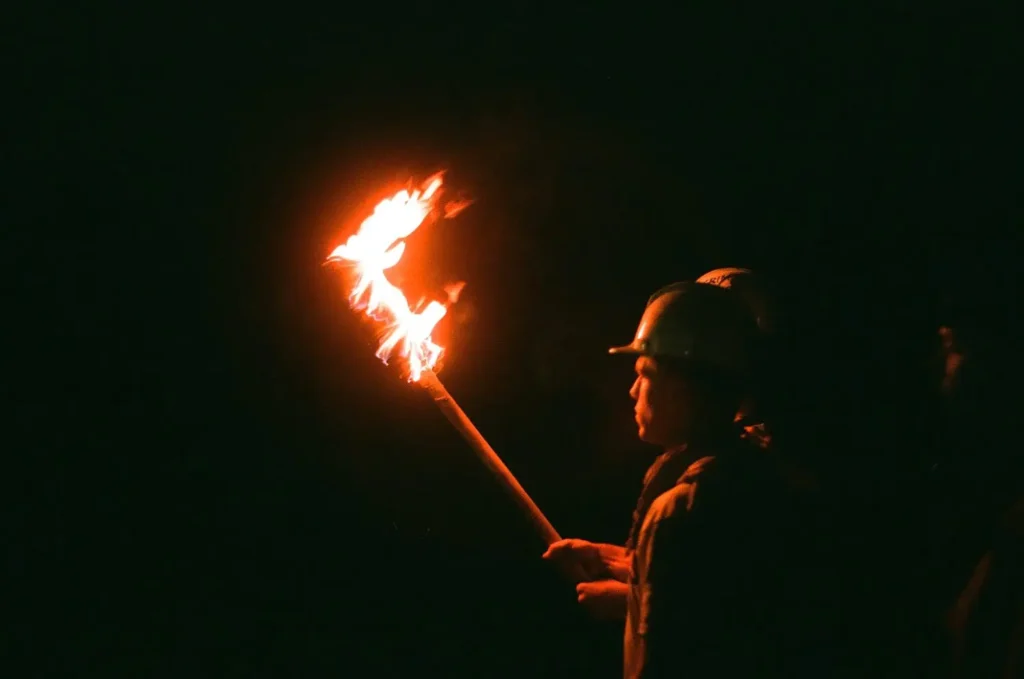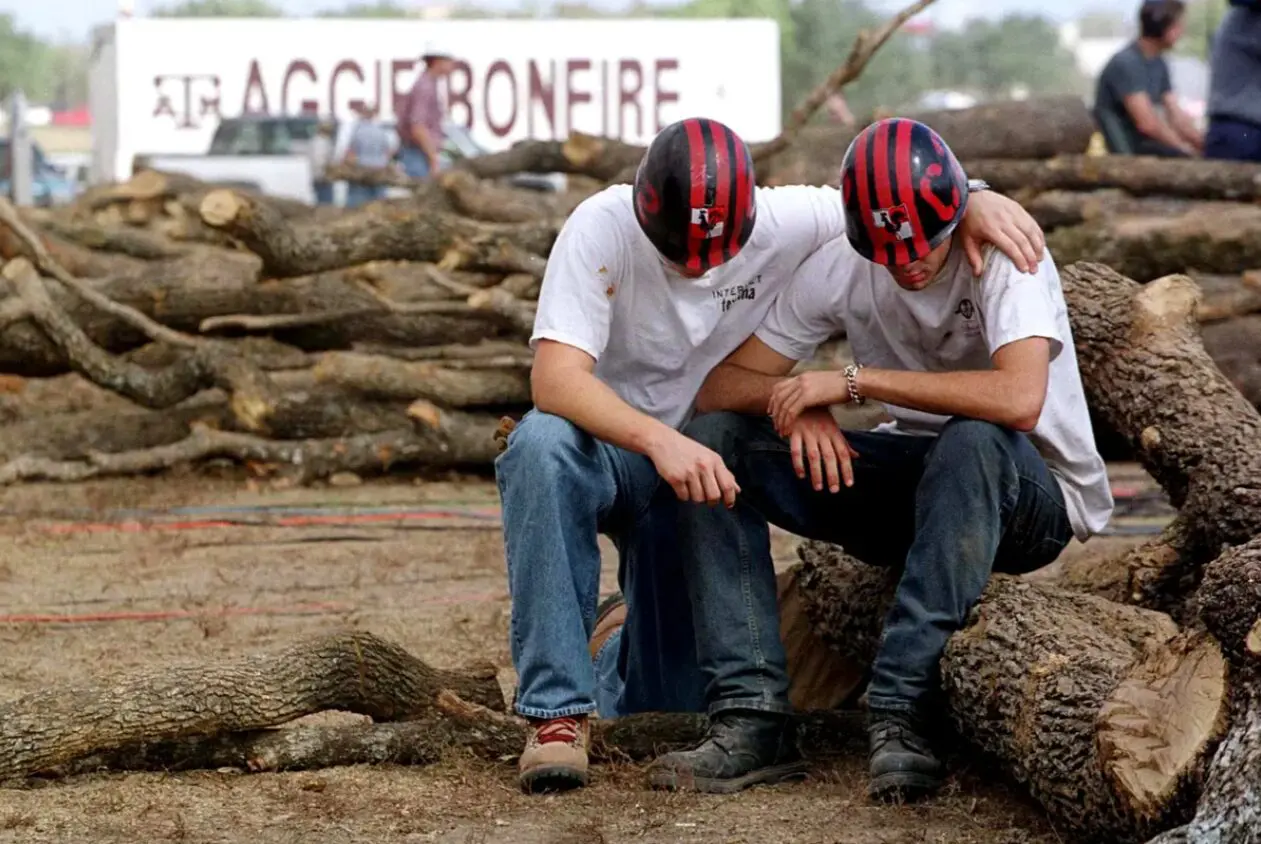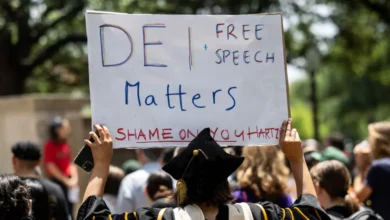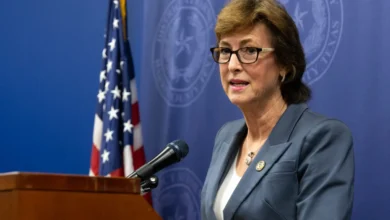Brent Fuller was a 24-year-old police and crime reporter in Houston on the morning of November 18, 1999, when reports of a devastating accident began flooding in.
“Our first notification came at around 2:30 a.m. from a young woman,” he recalled. “She was seeking help, though I’m not sure if she knew she was speaking to a news station. She said, ‘We need to get the word out about this. We need help.'”
Even over the phone, it was clear that something tragic had occurred.
“You could hear the yelling and screaming in the background,” Fuller said. “She was right in the middle of the chaos. You could hear people shouting, ‘We need pliers, we need help!’ It sounded like something out of a war zone, something you’d expect after an explosion or a major disaster.”
At 2:42 a.m. on November 18, 1999, the Aggie Bonfire at Texas A&M University collapsed during its construction, killing 12 people and injuring 27 others. Before its collapse, the bonfire had stood 59 feet tall, made up of about 5,000 logs. The bonfire had been a nearly century-long tradition at Texas A&M to celebrate major football games, especially the rivalry between Texas A&M and the University of Texas.
Upon hearing the call in Houston, Fuller was quickly dispatched to College Station, about 90 minutes away. When he arrived, the scale and devastation of the incident were immediately clear, even in the dark.
“I thought I was looking at a building,” Fuller said. “It was like a two-story structure, huge logs piled up. I wasn’t prepared for how massive it was. It was just a pile of confusion and chaos.”
Although Fuller had covered numerous mass tragedies, including shootings and natural disasters, the scene at the bonfire was unlike any he had witnessed before.
“As the light broke, rescuers were trying to save those trapped,” he said. “I saw them carrying out bodies. It was surreal—young people, just a few years younger than me, caught in this. It was a terrible loss, one of Texas’ greatest tragedies.”
Now, 25 years later, Fuller, nearing his 50th birthday, still feels the weight of that day.
“I don’t think there was anyone who wasn’t crying,” he said. “Seeing those bodies, it’s just something you never want to experience.”
This Monday, Aggies will gather at 2:42 a.m. at the site of the collapse, where a Bonfire Memorial now stands, to honor the victims in their annual remembrance ceremony.
In a statement, Texas A&M President Ret. Gen. Mark A. Welsh III emphasized the importance of remembering the 12 who died and ensuring their legacy lives on.
“Year after year, Texas A&M students have worked to ensure we never forget those members of the Aggie Family who were taken from us,” he said. “Today and always, we hold these 12 Aggies and their families close to our hearts.”
**Bonfire in the Present Day**
After the 1999 tragedy, Texas A&M ceased sponsoring the Aggie Bonfire, which had been held annually since 1907, with the exception of 1963, when President John F. Kennedy was assassinated.
Though the university no longer sanctions the bonfire, the tradition lives on off-campus through Student Bonfire, an unaffiliated organization. First held in 2002, this event, known as the Unity Project, is still organized by students today.
Mason Taylor, a Senior Red Pot in Student Bonfire, explained that the tradition continues to honor those lost in 1999. The Senior Red Pots are among the highest-ranking members of the organization, named after the hard hats worn during construction and the burn.
“I see it as the Aggie Spirit physically embodied,” he said. “It’s students volunteering their time to learn real-world skills, take on leadership roles, and build this fire every year for all Aggies to enjoy.”

Remembering the 1999 collapse is central to Student Bonfire’s mission.
“As much as Student Bonfire is now its own thing, it’s still a living memorial,” Taylor said. “On every Red Pot’s helmet are the names of the 12. We know the reasons behind the collapse, what happened, and how to prevent it from happening again.”
Taylor explained that the collapse was caused by two major issues: one corner of the bonfire being overbuilt while another was underbuilt, creating an unstable structure, and the failure to use steel cables, which had been introduced in 1994.
“Now we ensure that every log touches the ground,” he said. “We have a center pole and four ‘windal sticks’ on the outside to stabilize the structure, with logs of various heights creating five tiers.”
This year’s quarter-century anniversary of the collapse coincides with the first renewed football rivalry between Texas A&M and the University of Texas. Although Taylor is excited about the game, he emphasized that the focus is on honoring those lost in 1999.
“We’re focused on commemorating the 25th anniversary,” he said. “We still have the fire to build, and it will be done the same way as always.”
For Taylor and many involved in Student Bonfire, the tradition goes beyond football.
“As a Red Pot, it’s my whole life,” he said. “I grew up hearing about it from my dad and wearing his pot. We make many sacrifices as Bonfire builders. You can’t go home every weekend or always hang out with friends—you’ve got a bonfire to build.”
Earlier this year, the Texas A&M Board of Regents discussed bringing the Aggie Bonfire back to campus but ultimately decided against it due to safety concerns and the inability for students to lead the tradition as in the past.







